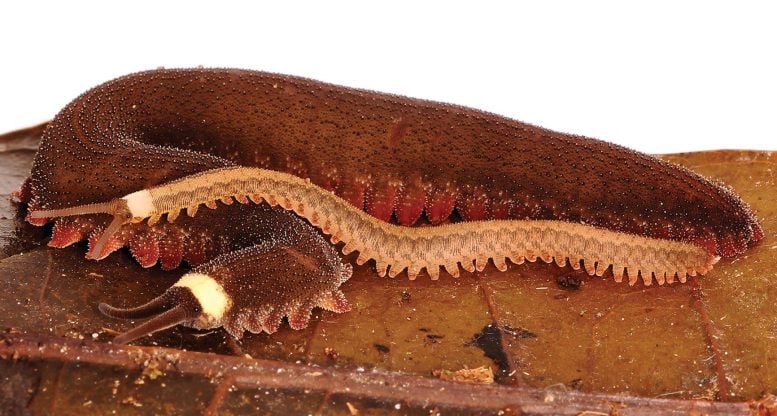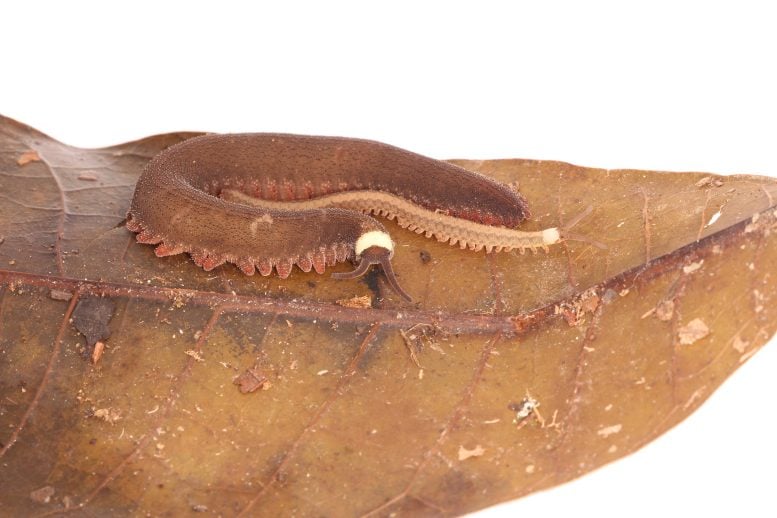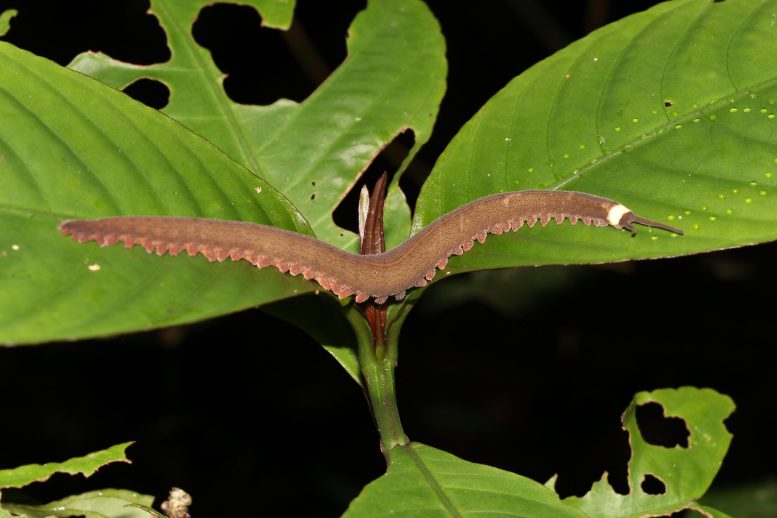
A newly discovered velvet worm species in Ecuador, the Tiputini velvet worm, showcases unique ecological and morphological characteristics, enriching the known biodiversity of the region.
Researchers have described a distinctive new species of velvet worm from Ecuador. The species, named the Tiputini velvet worm (Oroperipatus tiputini), was discovered in the lowland forests of the northern Amazon. It is the first newly described species of Ecuadorian velvet worm in over 100 years.
The velvet worm is generally nocturnal and exhibits parental care, meaning the mother takes care of her young after they are born. These animals are hunters who use a sticky substance secreted from a pair of anterior glands to trap their prey.

Unique Characteristics and Habitat
Published as a new species in the open-access journal Zoosystematics and Evolution, the Tiputini velvet worm can be distinguished from other known velvet worm species by its skin texture, coloration, and leg structure. The Tiputini velvet worm inhabits old-growth terra firma forests with a closed canopy, where it searches for prey on leaves and stems of small herbs less than 70 cm above the ground, in leaf litter, and on tree roots.
Velvet worms, also known as onychophorans or peripatus, are rare and unique invertebrates often referred to as “living fossils” because they evolved over 500 million years ago, long before the appearance of dinosaurs. Currently, only about 240 species are known, inhabiting tropical regions in the Americas, southern Chile, Africa, Southeast Asia, Oceania, and New Zealand. The last time Ecuador’s velvet worms were studied was over 100 years ago, in 1905.
Credit: Roberto J. León, Archive Universidad San Francisco de Quito USFQ
Significance of the Discovery
A research team led by Jorge Montalvo from the USFQ Museum of Zoology named the new species in honor of the Tiputini Biodiversity Station (TBS), part of the Yasuní Biosphere Reserve, recognizing the hard work of the station’s management, research, and field team in protecting biodiversity. So far, the species is known only from this location.
The description of the Tiputini Velvet Worm raises the total number of described velvet worm species in Ecuador to seven. This species is the first from the Ecuadorian Amazon lowlands and the third in the western Amazon. Most velvet worm species in Ecuador are known from only one locality, and in some cases, their taxonomy is unclear and requires further revision.

Research and Description Process
“The research on this new species took several decades. I discovered the first individual of this new species in 2001, and we finally managed to describe it as part of Jorge Montalvo’s graduation thesis, who is now my colleague at the Museum of Zoology at USFQ. To complete the description, we used not only macromorphological descriptions but also high-magnification images obtained with a scanning electron microscope,” said Diego F. Cisneros-Heredia, one of the authors of the scientific article and director of the Museum of Zoology at Universidad San Francisco de Quito USFQ, Ecuador.
Reference: “A new species of velvet worm of the genus Oroperipatus (Onychophora, Peripatidae) from western Amazonia” by Jorge L. Montalvo-Salazar, M. Lorena Bejarano, Alfredo Valarezo and Diego F. Cisneros-Heredia, 14 June 2024, Zoosystematics and Evolution.
DOI: 10.3897/zse.100.117952